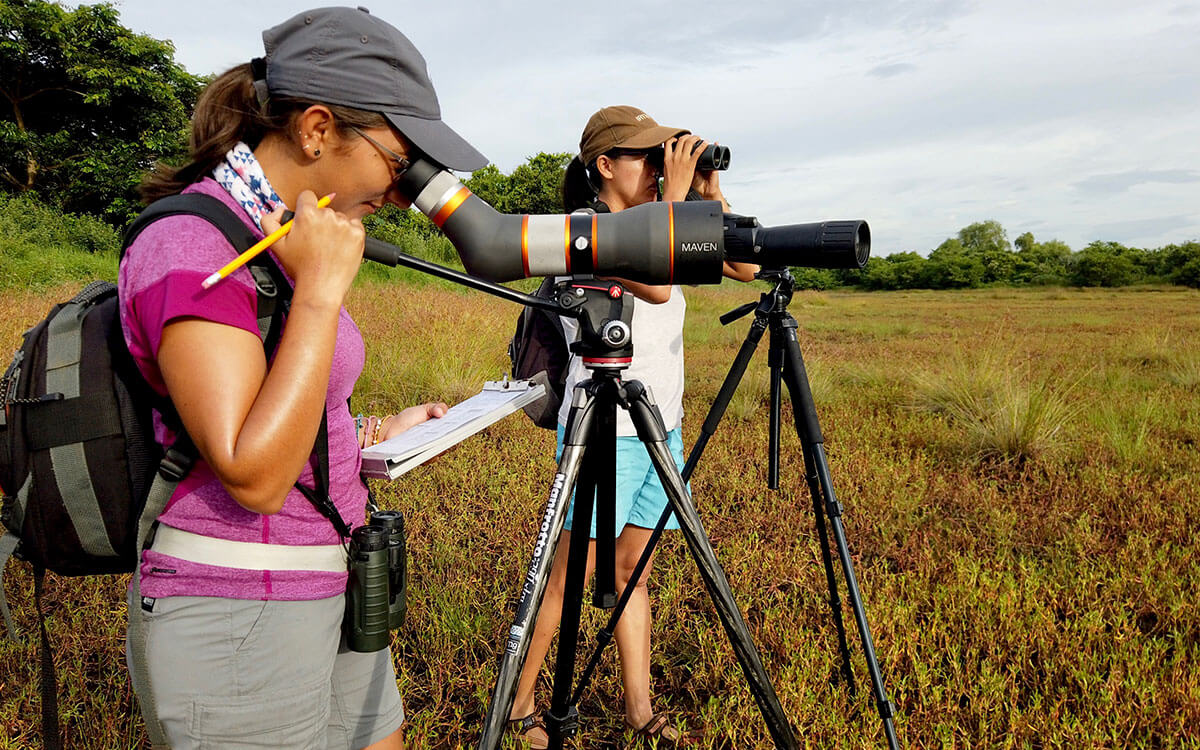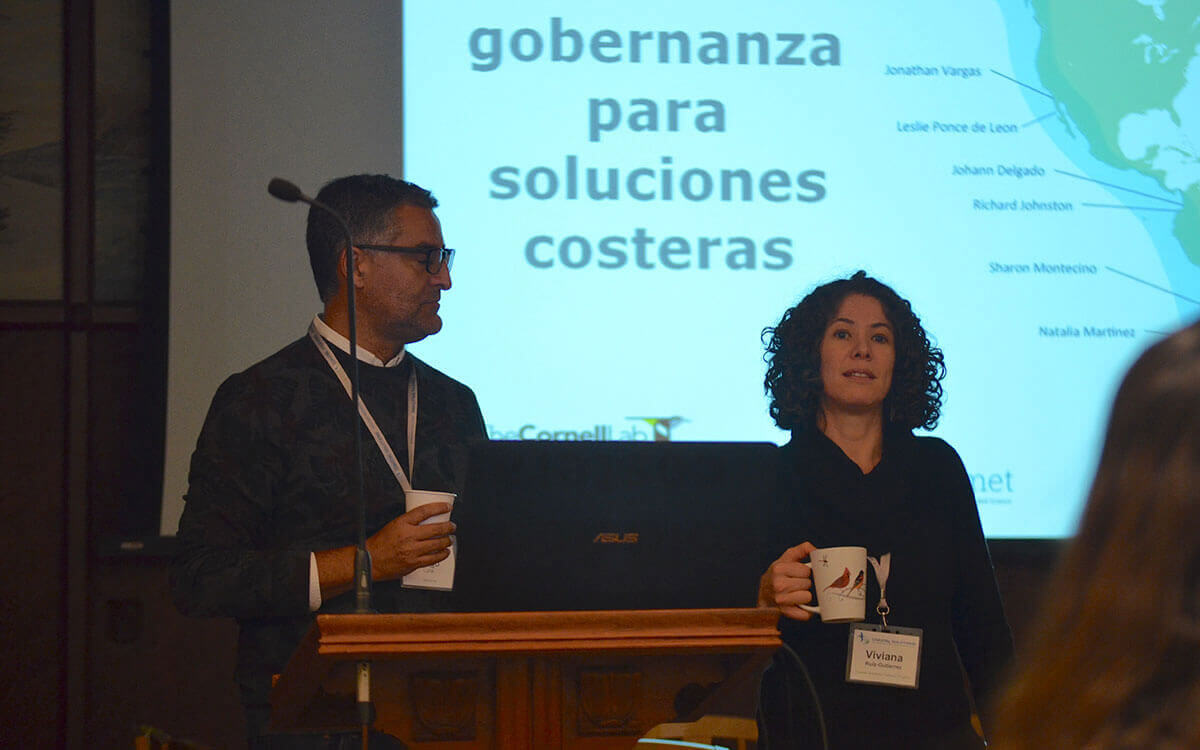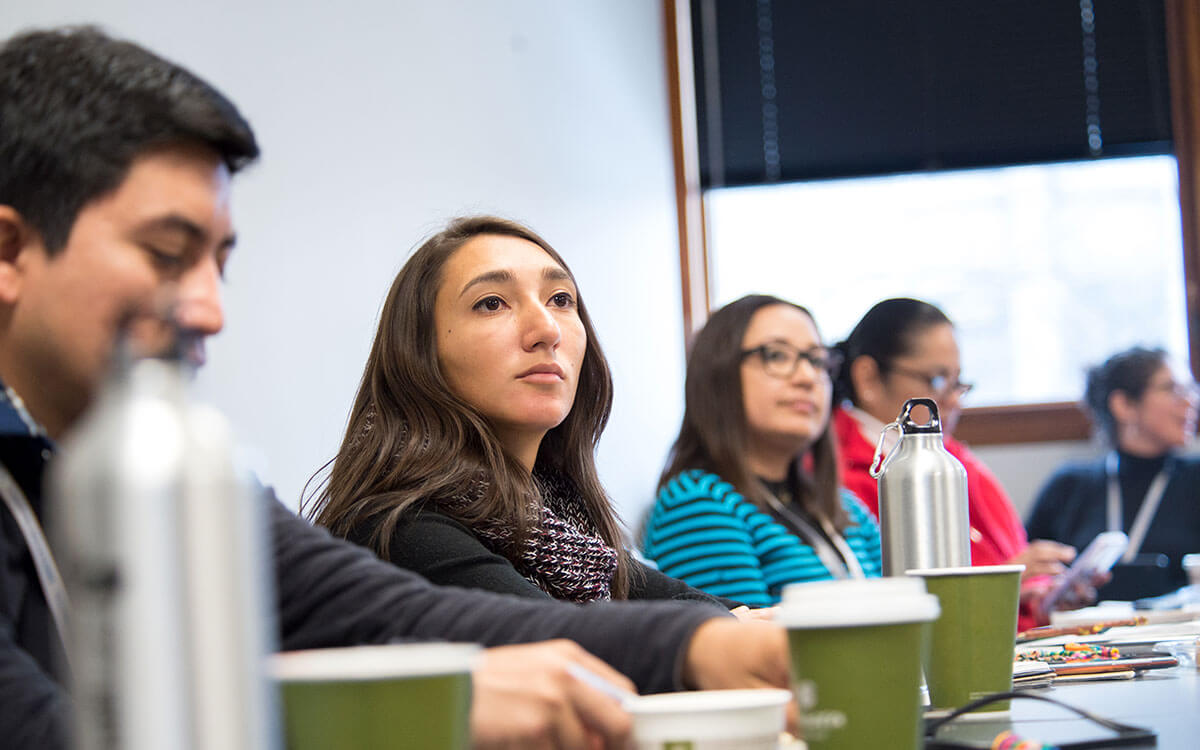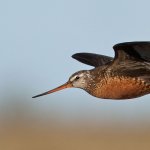The Pacific Americas Shorebird Conservation Strategy identified the need to increase the partner and stakeholder capacity as priority actions to reduce key threats that will maintain or restore shorebird populations. In 2018, in response to these needs, the David and Lucile Packard Foundation along with the Cornell University Lab of Ornithology launched the first call for proposals for the Coastal Solutions Fellows Program. This program aims to achieve conservation impacts at key sites for shorebirds in the Pacific Flyway of the Americas, focusing primarily on increasing local capacity and generating international and multidisciplinary collaborations.
Historically, conservation efforts for shorebirds and their important sites have focused primarily on Canada and the United States. To ensure conservation along the entire flyway, the program’s objectives focus on strengthening projects and programs in other countries along the flyway.


Left: Surveying fields behind a shrimp farm in Guatemala. Photo: C. Gesmundo WCS. Right: Diego Luna, WHSRN Conservation Specialist, and Viviana Ruiz, Research Associate Cornell Lab of Ornithology kicking off a Good Governance Workshop for the fellows. Photo: Cristian Perez.
The Cornell University Lab of Ornithology conducted an assessment of a series of coastal wetland conservation projects in the Pacific Flyway. The findings indicated thatthere has been great progress in the creation of nature reserves, capacity building, monitoring, and increased access to information. However, there is still a major human resource capacity. More local leaders are needed to multiply efforts, and promote interdisciplinary and intersectoral work. “We had been working in isolation. According to the assessment, conservation efforts have had the participation of civil society organizations and academia but very little has been advanced on planning, engineering and decision making of a country’s development investments,” says Osvel Hinojosa, Director of the Coastal Solutions Fellows Program.
Over the past two years, 12 fellows have received support from Coastal Solutions to work throughout the hemisphere on conservation projects with a multidisciplinary and cross-sectoral approach. This year, six more fellows will start the program, with implementation of their projects to begin in May. One of the major advantages of being part of this program is the training and education offered by the program. But as Juanita Fonseca, a member of the 2021 Fellows group shared, “the possibility of being part of a network of collaborators throughout the continent, working towards a common goal” is a reward appreciated by all participants.

Each year the fellows participate in a retreat where they get to know other fellows and participate in trainings and work sessions. Photo: Amaranta Delgado.
Each year the fellows participate in training workshops and work sessions to improve their skills, refine their projects, and ensure that their implementation has an impact on shorebird habitat conservation. Workshops include governance, institutional framework, effective conservation communication, leadership, fundraising, professional development planning, among many others. “We hope that the fellows will see this opportunity as a learning and professional development process. A platform to not only conserve coastal areas and shorebirds, but to develop their skills and create a community of practice and learning among them,” explains Hinojosa.
Only six candidates are selected for each call for applications. However, all applicant receives feedback and support to improve their pre-proposals and profile, so that they can submit their ideas to future calls if they are not selected. This mentoring aspect is an important component of the program because it supports all applicants in overcoming the inequity of access to education and professional development opportunities across Latin American countries. additionally, the call for proposals does not require the use of English as a requirement, as this could be another factor of inequity.
All of the sites with current or past projects are key shorebird sites identified in the Pacific Americas Shorebird Conservation Strategy. Ten of the 18 projects occur at Western Hemisphere Shorebird Reserve Network (WHSRN) sites.

Left: Fellows and mentors from 2019 at Cornell University. Photo: Antonia Larrea. Right: Fellows and mentors from 2020 cohort. Photo: Amaranta Delgado.
The possibility of working across sectors to achieve the implementation of effective conservation and management actions for important shorebird sites is one of the greatest features of the program. To date, there has been significant progress and concrete results of the projects underway, including the formulation of designs for site protection, best practice manuals for aquaculture, governance strategies, science-based management experiences, and reduction of disturbance at breeding sites.
Protecting migratory shorebirds requires linking different sites along the flyways. To be sustainable over time, it is also necessary to increase capacity to remove barriers while linking different stakeholders and sectors. The model of capacity building and multidisciplinary work for conservation promoted by the Coastal Solutions program could be replicated in other flyways in the Americas and globally.
For more information visit: https://en.solucionescosteras.org/ or contact Osvel Hinojosa, Director of the Coastal Solutions Fellows Program.
Cover Photo: Banded Red Knot in Chile. Photo: Natalia Martinez.






